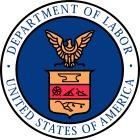 Fast Food Giant Denied Sign Language Interpreter for Deaf Applicant
Fast Food Giant Denied Sign Language Interpreter for Deaf Applicant
KANSAS CITY, Mo. — McDonald’s Corporation and McDonald’s Restaurants of Missouri violated federal law by refusing to accommodate and hire a deaf applicant, the U.S. Equal Employment Opportunity Commission (EEOC) charged in a lawsuit filed today.
According to the suit, Ricky Washington, who is deaf, applied online for a job at a McDonald’s restaurant in Belton, Mo. in June 2012. Washington indicated on his application that he attended Kansas School for the Deaf. Washington also said he had previous job experience working as a cook and clean-up team member at a McDonald’s restaurant in Louisiana in 2009. When the Belton restaurant manager learned Washington needed a sign language interpreter for his job interview, she canceled the interview and never rescheduled it, despite Washington’s sister volunteering to act as the interpreter. Restaurant management continued to interview and hire new workers after Washington made several attempts to schedule an interview.
Such alleged conduct violates the Americans with Disabilities Act of 1990 (ADA), which prohibits discrimination against people with disabilities in employment and requires employers to make reasonable accommodations for job applicants so they will have equal opportunities during the application process. EEOC filed its lawsuit (EEOC v. McDonald’s Corporation, et al, 4:15-cv-01004-FJG) in U.S. District Court for the Western District of Missouri after first attempting to reach a pre-litigation settlement through its conciliation process. EEOC seeks back pay, compensatory and punitive damages, and injunctive relief, including training for all McDonald’s managers on accommodations for applicants with disabilities, particularly those who are deaf.
EEOC St. Louis District Director James R. Neely, Jr. said, “Removing obstacles in the hiring process for people with disabilities is a national priority for EEOC. All employers, but especially large ones, should join with the agency to make sure everyone has equal access to the employment process.”
“People with disabilities have one of the highest unemployment rates in the country,” added EEOC Regional Attorney Andrea G. Baran. “Providing equal employment opportunities to all job applicants – including those with disabilities – is not just the law, it is good for our economy and our workplaces.”
According to company information, McDonald’s is a global fast food provider that serves over sixty-nine million customers per day in 100 different countries. The Belton, Mo. restaurant is owned and operated by the corporation’s world-wide headquarters in Oak Brook, Illinois.
Eliminating barriers in recruitment and hiring is one of six national priorities identified by EEOC’s Strategic Enforcement Plan (SEP).
The St. Louis District Office oversees Missouri, Kansas, Nebraska, Oklahoma and a portion of southern Illinois.
EEOC is responsible for enforcing federal laws prohibiting employment discrimination.
The original content can be viewed here.
© Copyright U.S. Equal Employment Opportunity Commission

 A federal district court judge ruled that the
A federal district court judge ruled that the  This post continues our two-part series discussing the Department of Labor’s (DOL’s) recent guidance on state retirement initiatives. The first part of this series, “
This post continues our two-part series discussing the Department of Labor’s (DOL’s) recent guidance on state retirement initiatives. The first part of this series, “





 Companies facing an I-9 audit by
Companies facing an I-9 audit by 